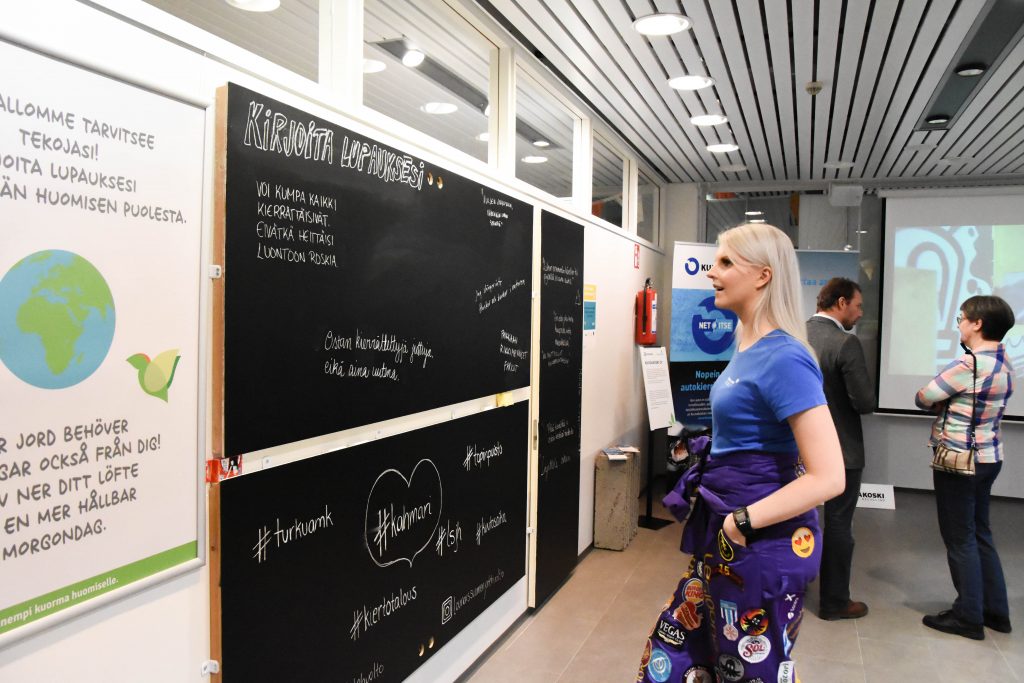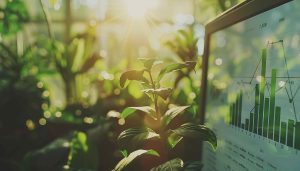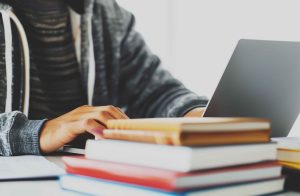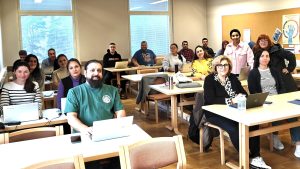-Haluan työskentelemään. En halua vastaanottaa toimeentulotukea Suomesta valtiolta. Näin kommentoi ulkomaalaistaustainen sosionomiopiskelija Omer, kun kysytään suunnitelmia valmistumisen jälkeen. Mediasta…
Tekijät | Authors

Students leave their mark in the region during their studies
Activities to increase the vitality and competitiveness of their respective regions are recurring themes in the strategies of universities of applied sciences. The view of the universities of applied sciences is that they support the goals of their regions by means of education that focuses on working life, graduates who find employment in the operating area as well as active research, development and innovation activities. However, the competence provided to the area by graduates is not the only contribution that students offer to the regions: they can have a considerable impact on the development of their region during their studies as well. Turku University of Applied Sciences supports this by strongly involving students in the RDI activities as soon as they start their studies.
Cooperation between higher education institutions and companies boosts the region’s objectives
In the Finland 2025 objective of the Programme of Prime Minister Sipilä’s Government, Finland is a pioneer in the circular economy (Prime Minister’s Office). Southwest Finland and Turku also strive to be pioneers in the circular economy, both nationally and internationally. Turku also aims to be carbon neutral by 2029, which is an objective promoted by means of active climate and environmental policy. The strategies have been listed in the climate action plan. One of the methods is engaging civic society as a whole in climate work: communities, companies and higher education institutions are invited to come together to develop a carbon-neutral Turku. (Climate action plan 2029.)
The change towards the circular economy is necessary with regard to carbon neutrality. In the circular economy, the utilisation of resources and materials is intensified so that the value and raw materials remain in circulation for as long as possible. This will reduce the use and transportation of virgin raw materials and help utilise surplus and side streams locally.
Companies benefit from the circular economy in a number of ways: It provides new operating models and opportunities to reduce costs when the use and refining of virgin raw materials is not necessary. The circular economy also enables companies to gain more revenue from the produced product, for example, by means of models provided by the sharing economy. (Sitra 2014.)
The circular economy is one of the peak competences of Turku University of Applied Sciences. The University of Applied Sciences exists for the improvement of working life, well-being and competitiveness of Southwest Finland, so it has the obligation and also good prerequisites to support the region to reach its objectives. Students learn the circular economy through innovation pedagogy methods, for example in the Circular economy 2.0 project learning environment, which brings together the university of applied sciences specialists, students and companies to create new circular economy solutions and to develop the operations of the companies in line with the circular economy model. In the project learning environment, the students participate in the region’s development in a tangible manner.
Students involved in developing Southwest Finland into a model region of the circular economy
The development of Turku and Southwest Finland into a model region of the circular economy is boosted by the Topinpuisto circular economy hub located in Metsämäki in Turku. The circular economy hub has risen around a former landfill and waste sorting station. The Topinpuisto circular economy hub includes nine companies, and the circular economy cooperation network in Topinpuisto also includes stakeholders from the region who want to join forces to develop the circular economy and business operations aligned with it.
The Topinpuisto circular economy hub and network is being built as part of the 6Aika: Future circular economy hubs in Finland (CircHubs) project, and the main driver is the Lounais-Suomen Jätehuolto Oy (LSJH) waste management company owned by the region’s municipalities.
Turku University of Applied Sciences is highly involved in the development of Topinpuisto. Students, in particular, have been an indispensable resource, which the research and development team of LSJH has also recognised. The other companies in Topinpuisto have also gradually realised how the students’ contribution can and should be utilised. For example, when companies want to locate partners who would utilise their material flows, active students eager to learn will find the right sources of information.
In the Future circular economy hubs in Finland project, students have carried out a large number of surveys that meet the companies’ needs. The objective of the surveys is, for example, to gather background information needed for generating business opportunities related to the circular economy. Among other things, the students have conducted interviews to determine the amount and type of different plastics that end up in waste in the Southwest Finland region. This is information needed by a stakeholder who transforms into new products plastic that would otherwise end up in waste and who is planning to establish operations in Southwest Finland. In the same manner, one company is interested in the volume of ceramic dishes, and a student assistant and a trainee working in the project surveyed volumes nationwide for the company.
A multidisciplinary team of students carried out a survey for a waste management company in Southwest Finland concerning the opportunities to reuse insulation material that is currently disposed of as waste and the companies that could take on reusing it. The surveys carried out by the students serve as stepping stones to synergies between companies: the students discover the opportunities created by the circular economy so that new business activities can emerge.
The Lounais-Suomen Jätehuolto waste management company has also involved students in the development and implementation of its visions. One student calculated the energy balance of the Topinpuisto companies and issued recommendations on tangible solutions for guiding the region towards energy self-sufficiency. The survey is now being continued by a project hatchery, which researches and tests whether the waste heat generated in Topinpuisto could be utilised in the region in the future.
Involving students in the projects commits them closely to working life in the early stages of their studies. The cooperation between students and companies benefits the students, companies and the operating area of the companies. The students receive an opportunity to deepen their competence and develop their expertise, the companies can strengthen and renew their operations, and steps towards a more sustainable future with improved vitality can be taken in the operating area of the companies.
The learning environment of the future will interact with society
Webster and Johnson (2008), who have researched the circular economy education, state that in its current form, education is a linear production facility: students are recipients of one-way information that becomes outdated quickly and, in the worst case scenario, is already old by the time the students enter the working life.
The working life is in a constant state of flux, and, therefore, education should also include ongoing self-development. The modern university of applied sciences teaches students to seek information independently and to assess it critically. The teacher’s task is to guide students to the right sources of information by asking the right questions.
Working life practices and information can be learned in project learning environments that simulate the working life. In these environments, the students will challenge themselves, their competence and also each other while solving companies’ problems. In the Circular economy 2.0 project learning environment, students have the opportunity to wear the hat of a consultant and work to help the region and its companies to succeed. For example, cooperation with Topinpuisto opens up opportunities to apply various learning methods.
Circular economy teaching can be taken out of the classroom to the field. Topinpuisto provides an opportunity to implement pilot projects involving waste heat and solar panels, for example. In the future, a textile reuse facility to be piloted in the region may also be included in the learning environments. A learning environment receives a completely new meaning when it is provided for testing in a real-life environment. Studies and the working life will be even more closely linked.
In project learning environments, the students will challenge themselves, their competence and also each other while solving companies’ problems.
Webster and Johnson’s (2008) idea about a community of full learning is well-suited for teaching the circular economy and sustainability. In such a community, a student interacts with society and is not taught only by the personnel of schools and higher education institutions but the teaching role is divided between other stakeholder groups. The student actively receives information from the school’s operating area but they also share their new knowledge for the benefit of the operating area. Topinpuisto and its network of companies fit well in this kind of community of full learning, as they can serve as a teaching platform. Students can also directly make use of the expertise of the personnel of the companies included in the network.
The development work carried out by students and their indirect impact on regional development often remains hidden. Already during their studies, the students develop not only themselves but also the provinces in which the higher education institutions are located. At Turku University of Applied Sciences, students are seen as the personnel’s partners, and companies are their customers. When students participate in the research, development and innovation activities, they also make their mark on the region’s companies even before graduation and promote, for example, the realisation of carbon neutral operations and the circular economy.
References
Ilmastosuunnitelma 2029. Turun kaupungin kestävä ilmasto- ja energiasuunnitelma 2029. [City of Turku sustainable climate and energy action plan] Draft 25 April 2018. Cited 9 October 2018. Available: https://www.turku.fi/sites/default/files/atoms/files//ilmastosuunnitelma_2029.pdf
Ranta-Meyer, T. (2013). Korkeakoulut ja yhteiskunnallinen vaikuttavuus – Korkeakoulujen arviointineuvoston 2012–2013 loppuraportti. [Higher education institutions and social impact – Final report by the Finnish Higher Education Evaluation Council 2012–2013] AMK-lehti/UAS journal. Cited 9 October 2018. Available: https://uasjournal.fi/koulutus-oppiminen/korkeakoulut-ja-yhteiskunnallinen-vaikuttavuus-korkeakoulujen-arviointineuvoston-2012%E2%88%922013-loppuraportti/
Sitra 2014. The opportunities of a circular economy for Finland. Sitra studies 84. Cited 9 October 2018. Available: https://media.sitra.fi/2017/02/23221555/Selvityksia84.pdf
Finnish Government. Bioeconomy and clean solutions. Cited 11 October 2018. Available: https://valtioneuvosto.fi/en/implementation-of-the-government-programme
Virta, M. (2018). Kiertotaloutta oppimassa. Cited 9 October 2018. Saatavilla: https://talk.turkuamk.fi/kiertotalous/kiertotaloutta-oppimassa/
Webster, K. & Johnson, G. (2008). Sense and sustainability. Educating for a circular economy. Cited 10 October 2018. Available: http://www.c2c-centre.com/sites/default/files/Sense%20%26%20sustainability_0.pdf
Artikkeli on julkaistu suomenkielisenä AMK-lehti/UAS-Journal numerossa 4/2018. https://uasjournal.fi/4-2018/opiskelijoista-jalki-alueelle/








